Greenery at your doorstep
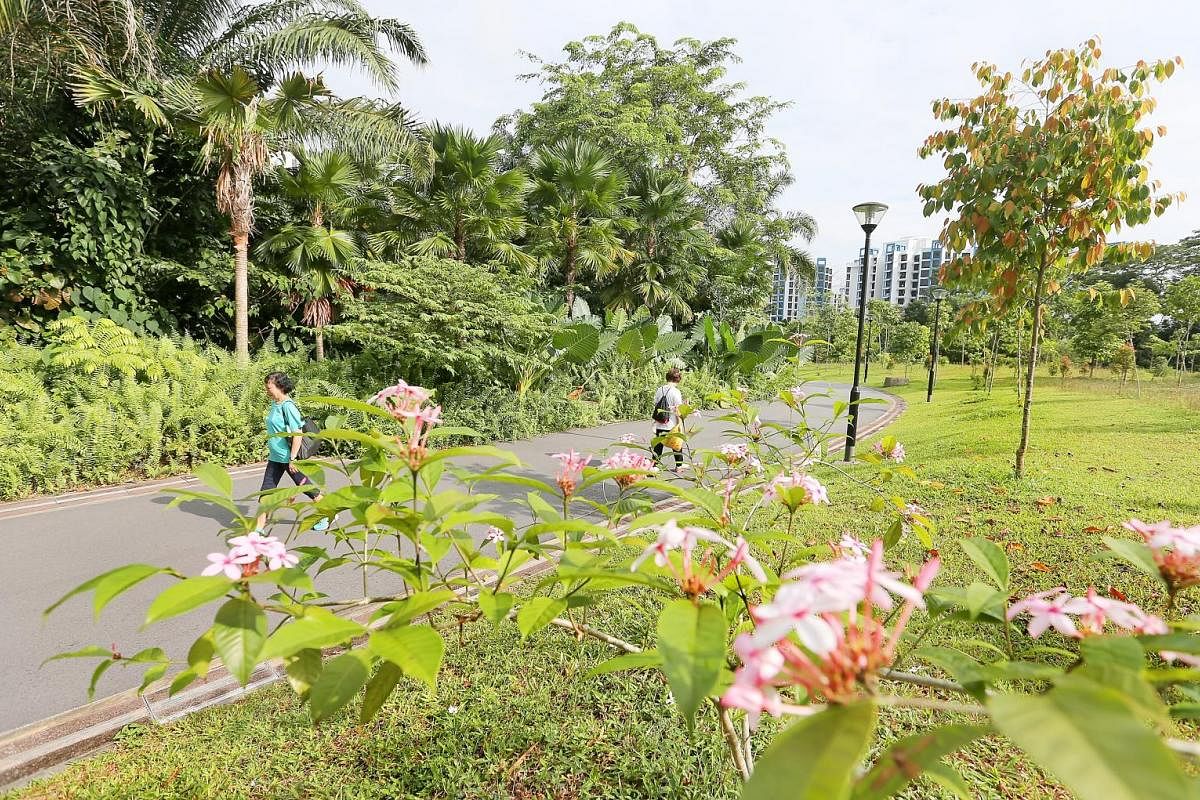
You do not have to travel far to be near nature. There are green gems nestled right in your neighbourhood.
The National Parks Board (NParks) manages 350 parks across Singapore and many of them are located near residential estates to provide easy access to green spaces, says Ms Kartini Omar, the board's group director of parks development.
She says: "They provide people with green recreational spaces and enhance the quality of our living environment and are integral to our vision to transform Singapore into a city in a garden."
The Straits Times visits six parks located near residences and finds out what you can do in them.
Zhenghua Nature Park
Opened in 2002, this nature park in Bukit Panjang skirts around the Central Catchment Nature Reserve and serves as its green buffer.
In November 2015, a 3.8ha extension featuring a wide variety of plants expanded the park to 17.3ha.
New facilities added include a pavilion, a multi-purpose lawn, a children's playground, an exercise station, public toilets, shelters, as well as jogging and cycling tracks.
Retiree Grace Wong, 64, who lives in an HDB block nearby, has been going to the park about three times a week since the extension opened. She brisk walks and uses the exercise station.
"I wasn't motivated to exercise before," she says. "But such a beautiful park with exercise facilities so near my place gives me the incentive to do so."
Because of its link to the nature reserve and its diversity of plant life, the park attracts rich wildlife.
Thirty-seven bird species have been spotted there, including the olive-backed sunbird, flameback woodpecker, pink-necked green pigeon, greater racket-tailed drongo and long-tailed parakeet.
Long-tailed macaques, squirrels and monitor lizards are other common sights.
It is also a popular spot for families. Housewife Jade Ng, 44, often goes there with her three teenage children and husband.
They live in an HDB block across the road.
Her husband jogs, her children sometimes fly a kite, while she brisk walks or does yoga.
She says: "There's something for both the young and old here."
Where: Segar Road entrance (nearest LRT station is Segar or Fajar), Bangkit Road entrance (nearest LRT station is Bangkit), Chestnut Avenue entrance (bus numbers 700, 700A and 966)
Lighting hours: 7pm to 7am

Yishun Park
Shortly after the launch of Pokemon Go in Singapore, this 13.9ha park made the news as a Pokemon hotspot and hundreds of people gathered there nightly to play the augmented reality game.
The Pokemon fervour has since receded, but the park remains a favourite spot for residents nearby to exercise and relax.
It has two children's playgrounds, one which has a sand pit - an uncommon feature in new Singapore playgrounds.
It also features fitness corners, an amphitheatre and a multi-purpose court.
Built in the mid-1990s over an old rubber estate, the park is home to an array of tropical fruit trees such as durian, rambutan, jackfruit, star fruit, coconut and bread fruit.
There is also the Dipterocarp Arboretum, or a living gallery of dipterocarps, which are a family of giant trees unique to tropical lowland rainforests.
For Yishun residents such as housewife Foo Meng Yock, who is in her 40s, and her son Isaac, seven, the park is a transportation shortcut and a hang-out.
Besides cycling through Yishun Park with her son to take him to school every day, she also takes him there to rollerblade and play badminton.
Occasionally, she also takes her son swimming at the Safra clubhouse, which is located on the park's grounds.
She says: "I am glad that we can do so many different activities so close to home."
Where: A 15-minute walk from Yishun MRT station
Park lighting hours: 7pm to 7am
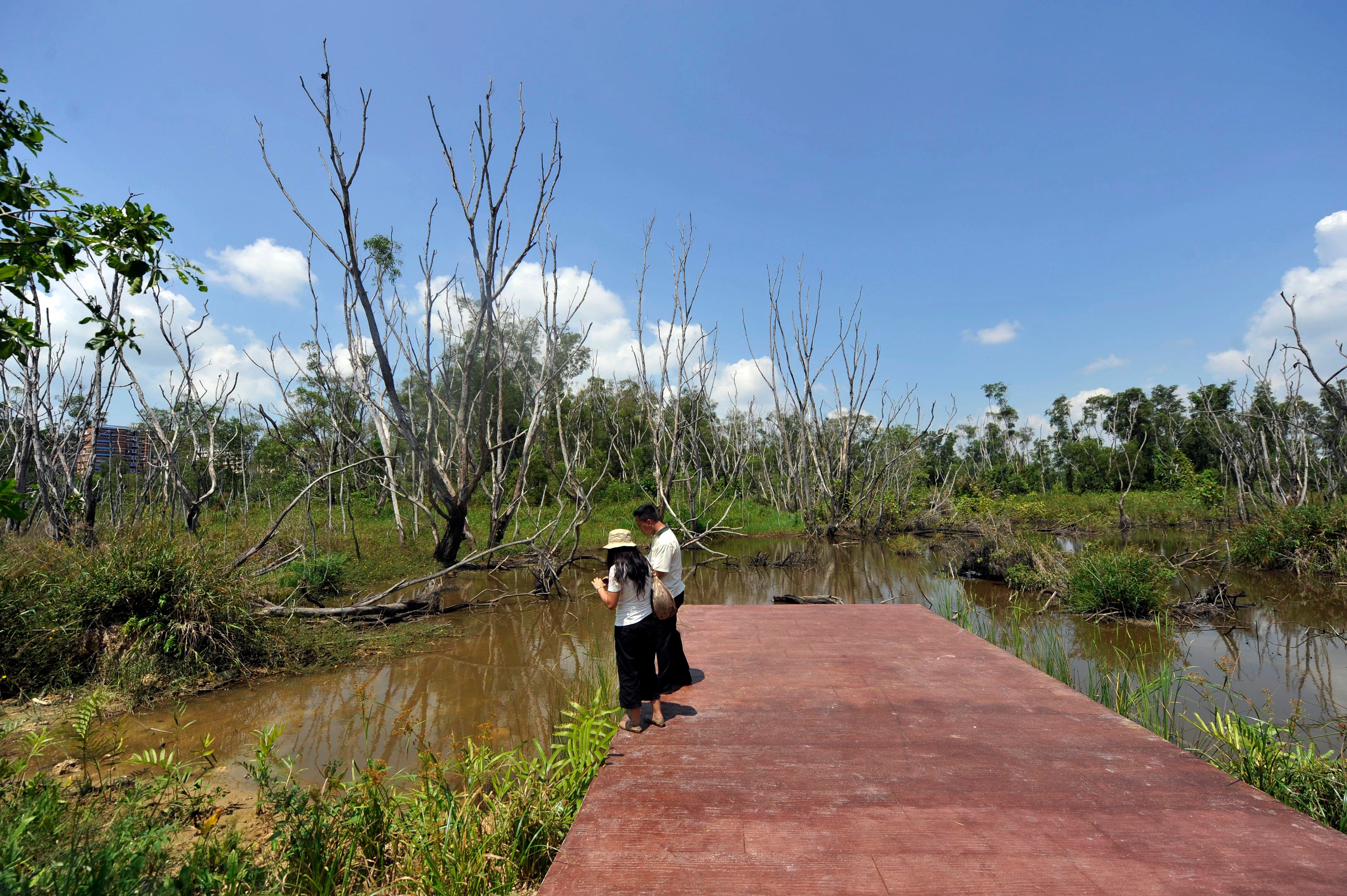
Tampines Eco Green
Opened in 2011, this ecopark is designed to look like a savannah, with various natural habitats such as marshlands, secondary forests and freshwater ponds.
At 36ha, it is also home to more than 75 species of birds, 20 species of dragonflies, 35 species of butterflies and 32 species of spiders.
It has many eco-friendly features including benches and signage made from recycled tree trunks.
Three bird hides, created with recycled twigs and branches, are used to shield birdwatchers so they do not disturb the birds.
Instead of a concrete footpath, the walking trails are covered with creeping grass. The park also features the first flush-free ecotoilet in public parks here. This converts human waste into compost using bacteria and wood shavings.
After checking out three to four parks in the east last year, Upper Changi resident Yong Caiwen, 34, a mother of two, chose Tampines Eco Green as the site for a child-led nature play group that she was facilitating, called Nature Play East Singapore.
"The park has hardly any signs of urbanisation and you find yourself engulfed by nature. It is also shady and there are bodies of water where children can observe pondlife."
She also appreciates that the park does not allow cyclists or pets because "this brings a very different feel to the environment".
She adds: "It's also accessible by public transport."
Where: Alight at Tampines MRT station and walk 20 minutes to the park via Sun Plaza
Park Lighting hours: No lighting after dark
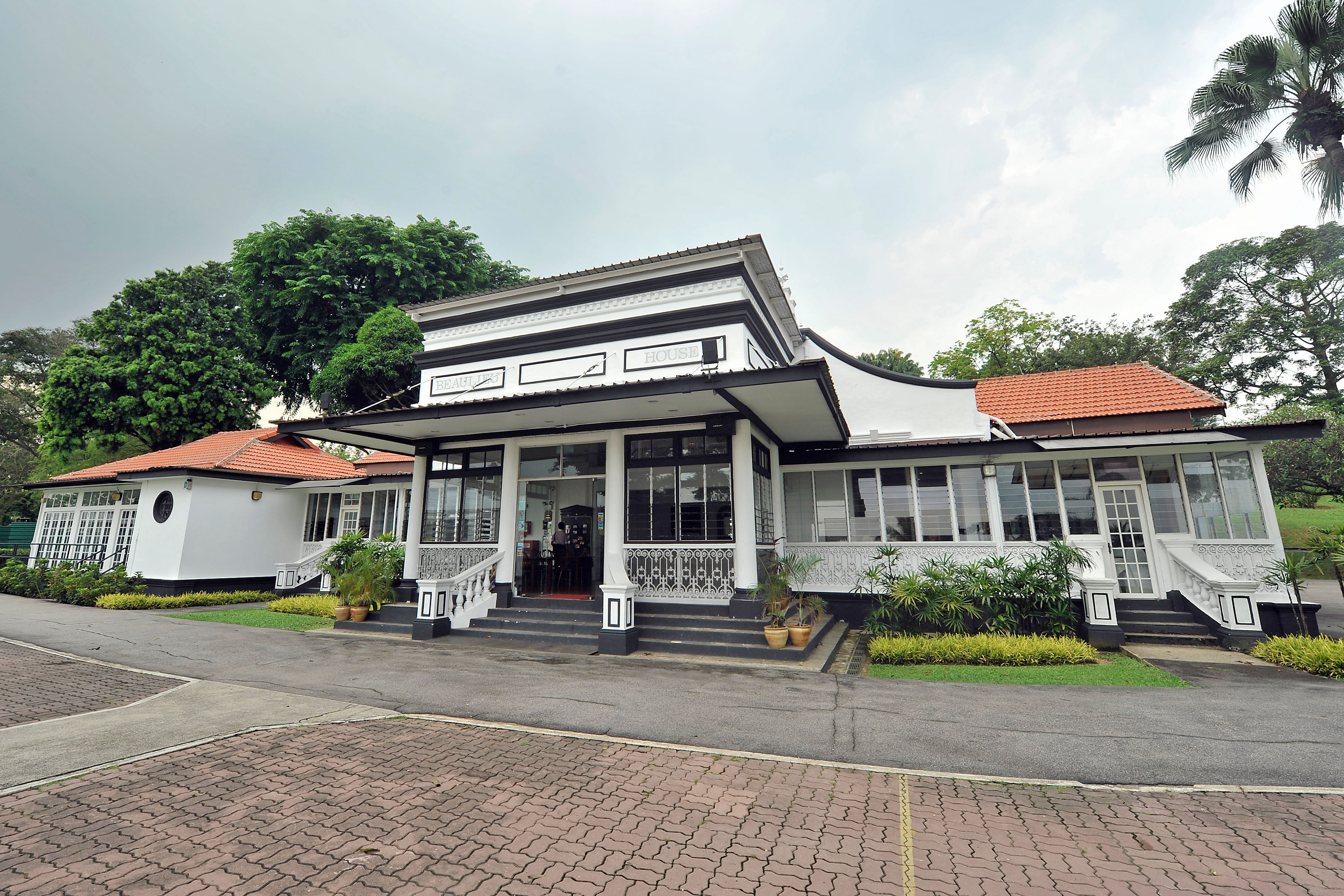
Sembawang Park
Tucked away in the northern corner of Singapore facing the Johor Straits, this park features one of the few remaining natural beaches in Singapore.
The park, which is laid out on undulating terrain, also offers visitors a glimpse of Singapore's colonial past.
The Sembawang Naval Base was developed there by the British in the 1920s to 1930s.
Some remnants from that era remain.
For example, the walkways in the park are restored old pathways used during the British occupation.
The Sembawang jetty was built by the British and later completed by the Japanese.
It is now a favourite spot for anglers to hang out.
Overlooking the jetty is Beaulieu House, built around 1910 as a private seaside retreat and later occupied by the British during the naval base years.
It now houses a restaurant, which serves Chinese seafood, Western cuisine and local delights.
In 2011, the 15ha park underwent an upgrading.
New amenities include a promenade, a fitness area and barbecue pits.
The old playground was replaced by a new one built in the form of a battleship, to tie in with the park's past as a naval base.
Sembawang resident and heritage blogger Jerome Lim, 52, says the park has been a special place for him since his childhood days.
"The jetty in the old days was quite different, without railings. I spent many nights there as a child fishing for crabs - something I continued to do into my late teens."
The jetty remains his favourite spot and he still visits the park about once a week "for the calm that the park and the sea provides".
He says: "It is also a great place to catch the sunrise."
Where: At the end of Sembawang Road. It can be reached by bus number 882. The nearest MRT station is Sembawang
Park lighting hours: 7pm to 7am
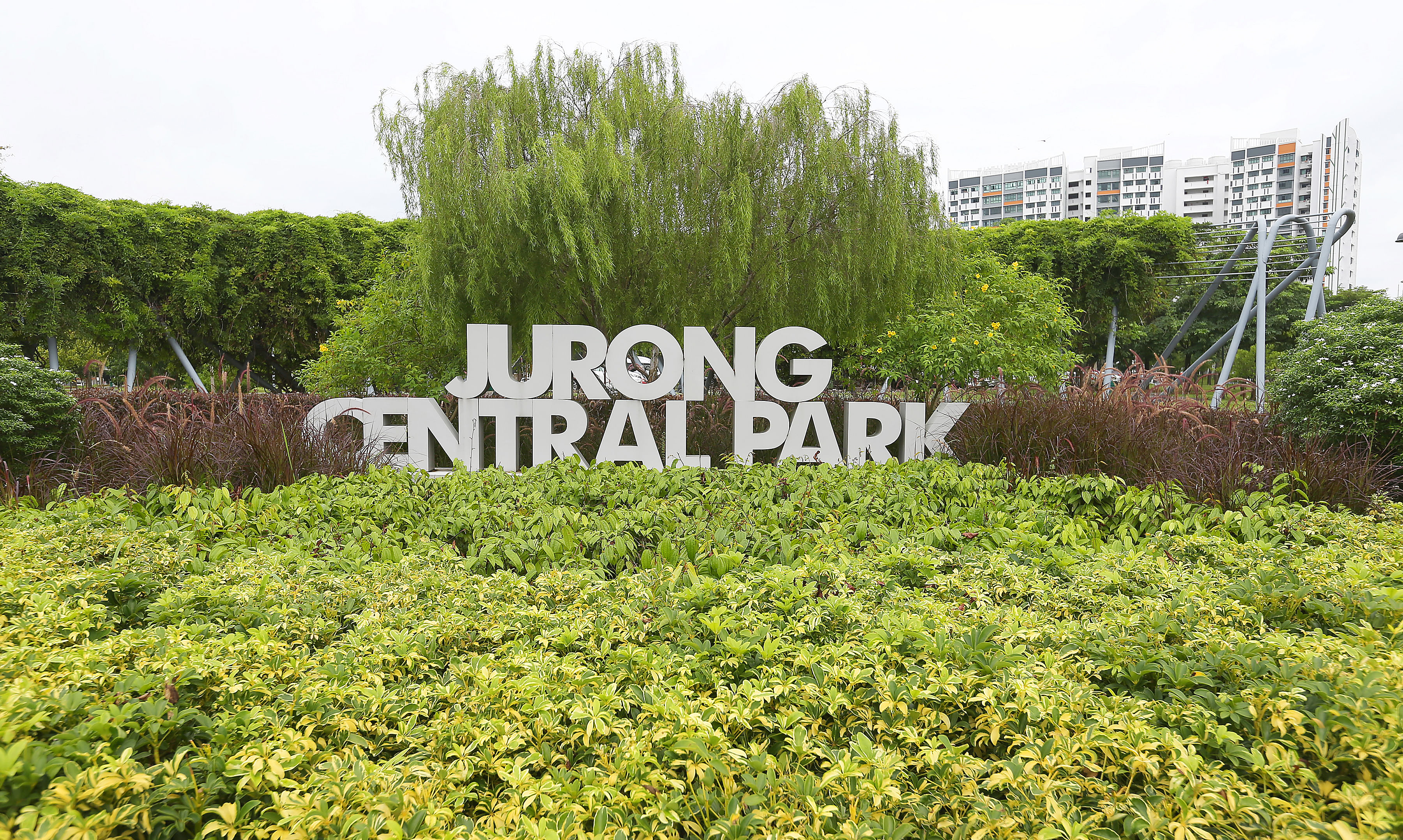
Jurong Central Park
Jurong Central Park brings a new twist to the board game experience.
At its snakes and ladders playground, the pavement on the ground is marked with numbers and players move through the playground based on the number they "roll".
When players land on a ladder, they have to climb across an obstacle to a higher number. When they land on a "snake", they have to go down a slide to a lower number. The first player to reach the number 100 wins.
Meanwhile, the Ludo Garden features a life-sized Ludo board game and players act as the "pieces" that move around on the board.
Instructions on how to play both games can be found at the park.
Opened in 2007, Jurong Central Park was the first park here to have life-sized board game features.
Nature lovers can also explore and discover the various types of aquatic plants, wildlife species and dragonflies that thrive in the ponds.
The park is also popular among serious runners such as Mr Lim Yanglyn. The salesman in his 30s trains there twice a week with members of the Jurong Safra Running Club, which is located next to the park.
He says: "I like that there is enough space here to accommodate both serious runners and those who run for leisure."
Where: Jurong Central Park is situated across Boon Lay MRT station.
Park lighting hours: 7pm to 7am
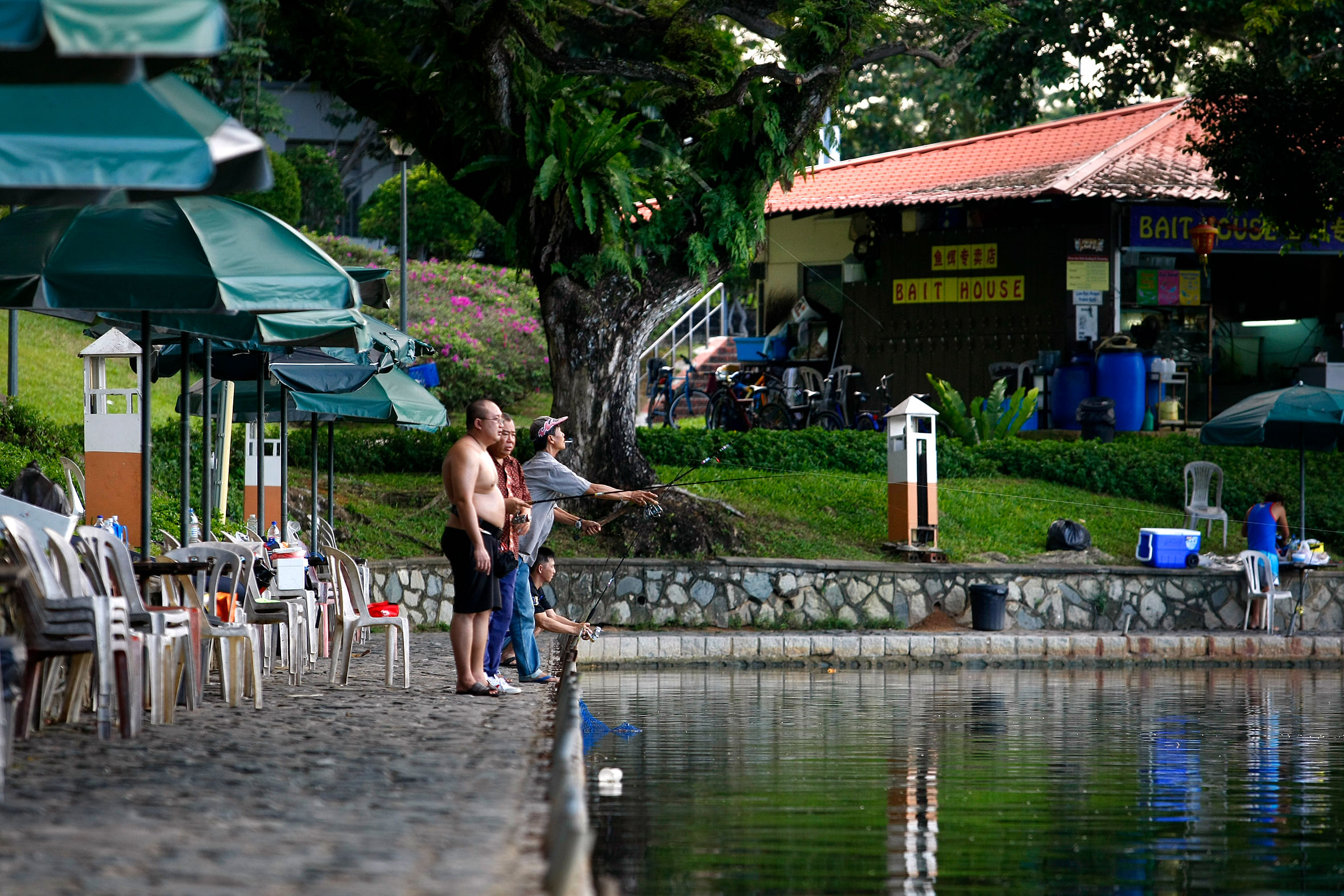
Pasir Ris Town Park
A 3ha seawater fishing pond can be found at this park, which is full of mature shady trees.
There are also smaller ponds for catching crabs and prawns. By the ponds are two bistro-bars and a halal seafood restaurant, Warong Kim's Seafood, that are popular at night.
The ponds and the restaurants were opened by D'Best Fishing in August 2014.
Seamstress Romnah Omar, 53, has been living in the HDB block across the road with her family since 1992 and can see part of the park from her flat.
She says: "The park used to be more quiet in the past but has become more commercialised."
In the past, she used to go there with her children, now aged 23 and 27. Nowadays, she goes alone or with her friends to exercise.
She also enjoys having dinner with her friends at Warong Kim's Seafood after work. "The food is good and reasonably priced. It's a nice alternative to the malls. It's more quiet and peaceful. You can see people fishing or prawning and children running on the grass."
Where: Opposite Pasir Ris MRT station
Lighting hours: 7pm to 7am
Join ST's Telegram channel and get the latest breaking news delivered to you.
A version of this article appeared in the print edition of The Straits Times on April 07, 2017, with the headline Greenery at your doorstep. Subscribe
